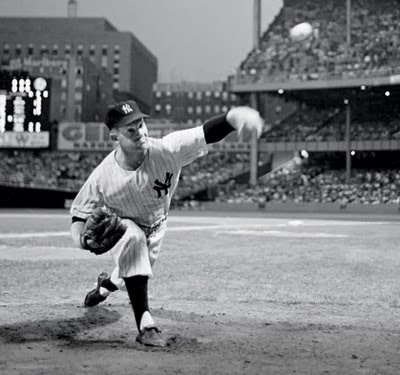Dear Sports Fan,
What is a southpaw and why are they called southpaws? Where does that term come from?
Thanks,
Sally,
— — —
Dear Sally,
A southpaw is someone who is left-handed. I’m guessing that you’re asking me instead of an etymologist because you heard the word used in the context of a sporting event. That’s apropos because the term comes from sports, baseball in particular, and was first used to refer to the handedness of a pitcher in particular. Here’s some background about baseball to lead into an explanation of the southpaw phrase.
Of all the major sports, baseball is probably the one that makes the biggest show of respecting its own tradition. One of its longest held tradition is playing games at night but not fully embracing it. According to Wikipedia, there have been night baseball games since the 1880s but major league teams “initially dismissed as an unwelcome gimmick by the big-league clubs.” The last hold-out in the major leagues, the venerable Chicago Cubs, succumbed to the night game trend in 1988, a hundred years or so later. There are still more day games in baseball than any other sport.
Hitting a major league pitch is an incredibly difficult feat and it requires, more than any other quality, great eyesight. As we know from the excellent book, The Sports Gene, the average vision of professional baseball players is 20/13 (they can see at 20 feet what most people can see at 13.) Doing anything to damage this vision, like painting the seams of the baseball white so that they cannot be distinguished from the rest of the ball, makes it virtually impossible for even the best baseball players to hit a pitch.
One naturally occurring factor that could effect the eyesight of the batter is, of course, the sun! If a batter were forced to look towards the sun in a low (rising or setting) position, it would seriously effect the game. Baseball at sunrise is unlikely but baseball games, particularly because of the tradition of playing during the day, could easily be played at or around sunset. You never hear about a batter with the sun in his eyes — fielders, yes, but not batters. This is because baseball stadiums are almost universally designed so that a batter standing at home plate facing the field will be pointed somewhere between due East and due North. This gets them away from the setting sun and, in the Northern Hemisphere, away from the Southerly winter sun as well. Popchartlab has a wonderful poster for sale that shows this.
In a baseball diamond where the batter faces East, the pitcher, standing opposite him, faces West. Imagine facing West and using your body as a map’s key or compass. Your eyes point West, your butt points East, your right arm points North, and your left arm… points South! This is how left-handed pitchers first became known as southpaws. Their paws literally face South in a traditional baseball stadium.
From baseball, the word has moved into other sports and into common use. I hear it most frequently in sports where handedness is a major tactical factor. Sports like hockey and tennis where which hand you favor marks which way you are more comfortable swinging your racket or stick are nice fits for using the term. I’ve also heard it used in basketball and boxing, two sports with motions (shooting in basketball, punching in boxing) that are asymmetrical and handed. In a recent episode of the NPR show, Radiolab, the hosts interviewed an English professor turned mixed martial artist, Jonathan Gottschall, whose first experience fighting was against a lefty and who talked about a theory for why lefties have been evolutionarily retained. The theory suggested that despite many negative aspects of left-handedness (lefties are more prone to any number of diseases and other early deaths,) they have a significant advantage in hand-to-hand combat because their relative rareness means that righties who are used to fighting righties can’t make sense of what’s coming at them until it’s too late.
I hope this answer has been both helpful and interesting. If not, can we blame it on the fact that I’m a life-long northpaw?
Ezra Fischer



